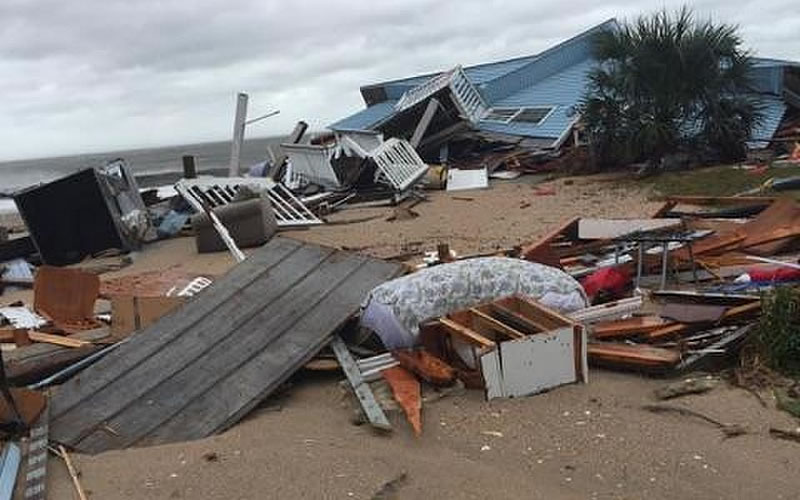
Edisto Beach home destroyed by Hurricane Matthew. Department of Defense photo via CC.
By Andy Brack, editor and publisher | An estimated 350,000 people along our coast evacuated for Hurricane Matthew in a withdrawal that didn’t turn out to be a disaster in and of itself.
 Even if you plodded in traffic on Interstate 26, the Matthew evacuation was nothing like the one years ago with Hurricane Floyd. Even if you were without power for days or suffered in the flooding aftermath in North Charleston or in the Pee Dee, it’s pretty clear that the state’s disaster plan passed the test of working effectively and efficiently to restore normalcy as quickly as possible.
Even if you plodded in traffic on Interstate 26, the Matthew evacuation was nothing like the one years ago with Hurricane Floyd. Even if you were without power for days or suffered in the flooding aftermath in North Charleston or in the Pee Dee, it’s pretty clear that the state’s disaster plan passed the test of working effectively and efficiently to restore normalcy as quickly as possible.
Gov. Nikki Haley and her “Team South Carolina” deserve a lot of credit for clearly communicating that people should leave the coast. After years of dry runs and updates to a coastal evacuation plan, they implemented it and it generally worked. Haley and her team, who held twice-daily news conferences at times during the disaster, got the word out about what people should do. The state hoped a million people would leave the coast and head 100 miles inland.
But a serious question now needs to be asked: Did we listen?
The coastal counties alone are home to just under 1.4 million people. If 350,000 evacuated during Hurricane Matthew, that means about 1 million people – 75 percent of coastal residents – decided to ride out the storm.
 And that begs the question of why did so many people stay when the state called for an evacuation? Maybe they’ve always stayed and figured it would be O.K. Maybe they wanted to experience it. Maybe in true “Don’t Tread on Me” fashion, they didn’t want to be told what to do. Maybe they were worried about folks looting their property. Who knows?
And that begs the question of why did so many people stay when the state called for an evacuation? Maybe they’ve always stayed and figured it would be O.K. Maybe they wanted to experience it. Maybe in true “Don’t Tread on Me” fashion, they didn’t want to be told what to do. Maybe they were worried about folks looting their property. Who knows?
But as residents continue to mop up, now is the time for state and local officials to try to assess whether the evacuation was a real success, not in terms of what happened on the roads on the way out, but rather whether having a quarter of coastal residents heed the need to leave is acceptable – and whether anything can be done to encourage more people to leave to safer ground during the next evacuation (and you know there will be one).
On the Tuesday before the storm hit, Haley emphasized that evacuations are issued when the state wants people to get out of harm’s way.
“We don’t do voluntary or mandatory any more. An evacuation is an evacuation,” she said on Oct. 4. “So if we tell you we want you to realize that if things stay the same, we’re going to look at a 3 o’clock evacuation, that is what it is. What we are asking is, you know, if you can leave sooner, leave sooner. Make sure you have a full tank. I can’t say that enough. But also we don’t want a full surge of moving at the same time. That’s why we’re trying to get this information out now.”
All in all, thank goodness the storm wasn’t as bad as it could have been when it blew through. Because so many people stayed, the human impact could have been a lot worse.
- Have a comment? Send to: editor@charlestoncurrents.com



 We Can Do Better, South Carolina!
We Can Do Better, South Carolina!
























